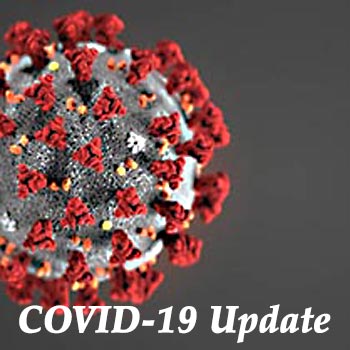Health Officer Expects Salons, Barbers, Gyms, Churches to End Indoor Service
By Jondi Gumz
After weeks and months of flattening the curve of the contagious coronavirus COVID-19, Santa Cruz County cases have risen enough to warrant state scrutiny ━ and being on the watch list means in about 10 days, hair salons, barbershops, gyms, churches and malls will not be able to offer services indoors, Santa Cruz County Health Office Dr. Gail Newel said Wednesday night.
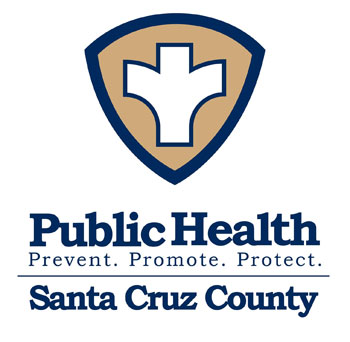 Also, offices for nonessential work will have to go virtual again.
Also, offices for nonessential work will have to go virtual again.
The goal is to cut down the spread of COVID-19, which has ballooned to 848 cases in Santa Cruz County, with 511 being active.
Once the case rate exceeds 100 per 100,000 people in 14 days, and that statistic persists for three days in a row, the state intervenes.
Newel anticipates that will happen.
“You’ve got a week to get to the barber shop,” she said.
As of Wednesday, 35 of California’s 58 counties were on the watch list.
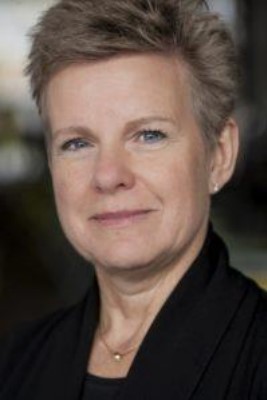 Newel said she was notified by the state Wednesday afternoon, just hours before she spoke to constituents of Supervisor John Leopold via Zoom.
Newel said she was notified by the state Wednesday afternoon, just hours before she spoke to constituents of Supervisor John Leopold via Zoom.
“We were flagged,” she said, explaining that the problem is the case rate, not hospitalizations or ICU bed capacity.
For March, April and May, during the shelter-in-place order, the case rate in Santa Cruz County was one of the lowest in the state.
In June, with the economy in tatters, governor opened up many more industries, including tourism.
Party Time
“People felt it was party time,” said Newel, contending the governor sent mixed messages by retaining a statewide shelter-in-place order but allowing tourism to reopen.
 With Fourth of July, families started gathering again, as if things were back to normal. Some heeded the advice to wear a face covering to prevent the virus from spreading but many did not.
With Fourth of July, families started gathering again, as if things were back to normal. Some heeded the advice to wear a face covering to prevent the virus from spreading but many did not.
Newel shared an example from interviews with people confirmed to have COVID-19: “oh, yes, I did go to a graduation party and now 14 of my family members are sick.”
Of the 848 total cases, 36 percent are millennials age 18 to 34 and half are in Watsonville.
Latinos, who comprise 33 percent of the population, have 49.5 percent of the confirmed cases, a figure that has dropped from 55 percent.
Asked about that decline, Newel said, “We’re seeing more Caucasian cases in the Watsonville area.”
A grassroots effort started several weeks ago in Watsonville to reach out to people in their native languages, Spanish and Mixteco, to explain how families can gather safely.
Employers Can Help
Cases have grown so quickly that Newel is asking employers to help.
 Once a workplace has three or more cases, she said the employer will be asked to prepare a list of personal contacts to give the county’s “contact tracing” workers a jumpstart to alert community members to their exposure to the virus so they can be tested.
Once a workplace has three or more cases, she said the employer will be asked to prepare a list of personal contacts to give the county’s “contact tracing” workers a jumpstart to alert community members to their exposure to the virus so they can be tested.
Newel said in most cases, it’s not the workplace where the virus is spread, but people living together, socializing together or hanging out in the break room without a mask.
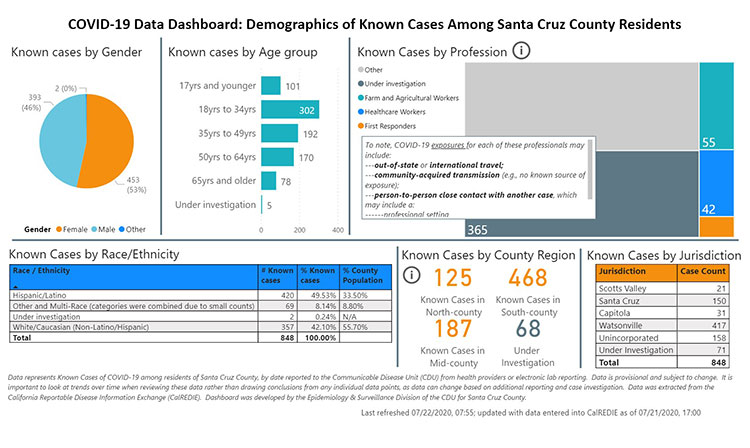 If people would wear a mask, keep six feet apart, stay home when sick, and not share food, Newel predicted the pandemic would be over in four to six weeks.
If people would wear a mask, keep six feet apart, stay home when sick, and not share food, Newel predicted the pandemic would be over in four to six weeks.
For those concerned about contracting the virus from packages or from a retail store, she said, “It’s pretty hard to get COVID-19 from inanimate objects or outdoors.”
Asked what’s the harm of people gathering outdoors, Newel said the problem is when people are sitting close together and sharing food ━ that close contact puts them at risk.
“At least 40 percent at asymptomatic (no symptoms). They never get ill and they unknowingly spread the disease to friends and family,” she said.
Santa Cruz County has 21 experienced investigators to do contact tracing and 29 new hires from the state, all working at home.
It’s taken time to get the new hires their laptops and cellphones needed to perform their job.
“But we are adequately staffed,” Newel said.
Tests Hard To Get
The county reports 25,192 negative test results but the latest challenge is getting a test.
The reason is a global shortage of chemicals critical to run the COVID-19 lab test.
As a result, the number of tests done in Santa Cruz County has shrunk from a peak of 431 on July 11 to 123 on July 22.
Newel said it takes three weeks to get an appointment at the OptumServe site at Ramsay Park in Watsonville and the test results come back in 10 days, which “is no value to us.” By that time, people with a positive test have already exposed many others to the virus.
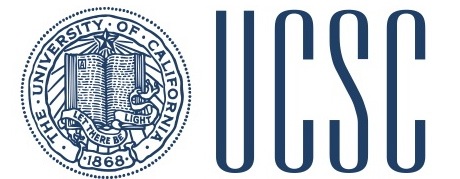 The workaround is the county has allocated nearly $1 million in CARES ACT money to buy equipment for a UC Santa Cruz lab, where researchers have developed an alternative testing process.
The workaround is the county has allocated nearly $1 million in CARES ACT money to buy equipment for a UC Santa Cruz lab, where researchers have developed an alternative testing process.
The UCSC lab is expected to ramp up from 150 tests a day to 900 or more tests a day with the new equipment.


